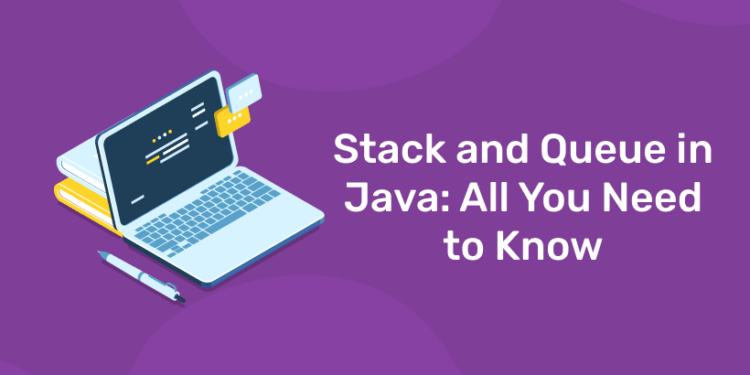Java is referred to as a strongly typed, multilingual, object-oriented programming (OOP) language. C++ and C have a significant influence on Java’s syntax. Java was designed almost exclusively as an object-oriented language, in contrast to C++, which mixed the syntax of structural, generic, and object-oriented programming. Although Java and C and C++ share a lot of the same syntax, Java has a simpler object architecture and fewer low-level functionality. Thus, Java is a language that is widely acknowledged to be relatively modern and whose potential is well known. Because it can transfer applications across platforms or operating system environments through the Internet, it differs from the majority of programming languages.Java is a general-purpose programming language created to enable WORA, or write once, run everywhere, which allows Java code to be executed on any platform that supports Java without the need for recompilation. The Java Virtual Machine (JVM) for that platform, which translates the Java bytecode to the platform’s machine language, is designed for the particular platform on which it is meant to be run. Java itself is platform-independent. Software called the Java Runtime Environment (JRE) is required to run any Java-based applications.
Learn to code from industry experts! Enroll here
Because Java allows faster data processing and synchronization across many different servers, making it more stable, it is utilized to create backend applications. The creation of Java applications for usage on laptops, game consoles, data centers, mobile devices, scientific supercomputers, etc. is very common. Java makes up 46.2% of all Android applications and is the standard programming language for Android development. These days, Java is frequently a preferred alternative for scientific applications, including Natural Language Processing. Java is utilized to construct complicated technologies that include Mobile Apps and AI programming, among other things (NLP). Whether we’re talking about the app or Web development, Big Data, AI, mobile development, etc., we have discovered a ton of Java applications in almost every domain. Java can also be used to develop Android applications, Business applications, Desktop applications, Web applications, Network applications, games, and more. As a result, Java makes it simple to construct desktop or mobile applications that work on a variety of servers and operating systems, including Linux and Windows.
Stack and Queue in Java
A stack is a group of items that are added to and taken out of order. A stack of plates is where the word “stack” originates. Therefore, we take (pop) plates as we need them from the top of the stack, and we add (push) plates to the top of the stack. A plate in the center of the stack is immovable and cannot be moved. In the same way, components can be put to the top of the stack, where they can also be seen or removed. The middle of the stack cannot be retrieved, removed, or added to. A fundamental data structure is a stack. They have numerous applications. Undo functionality in text editors is one such use. A stack is used to store every change. The most recent action appears when you undo something. It pushes modifications into the stack when you make them. You must have also noticed browsers’ Back and Forward buttons. Stacks are used to carrying out these as well.
Learn Coding in your Language! Enroll Here!
You must have waited in line to pay bills or to enter any stores. How does it function? The individual who is currently standing gets to go first in the line and submits the assignment. The Java Queue data structure operates similarly. The element that was added to the queue first is also removed first. The middle and back of the line cannot have any components removed. Additionally, no element can be placed at the front end or in any other position; only the back end may be added. The first-in, first-out (FIFO) concept is another name for this. The term “queue” refers to a group of items that are added to the back of the list and removed from the front. On the Java queue, we can also carry out several other operations. We can observe the element at the front end, determine the queue’s size, and determine whether the queue is empty.
Application of Stack and Queue
A linear data structure called a stack is used to store an ordered, linear sequence of elements. It is a type of abstract data. A stack operates according to the Last In First Out (LIFO) principle, which states that the element that was added last will be deleted first. Because we can only access the elements on the top of the Stack, it is necessary to maintain a pointer to the top of the Stack, which is the last element to be placed, to implement the Stack. The key applications are:
- The evaluation of expressions with operands and operators can be done using a stack.
- Stacks can be used for backtracking, or to verify if an expression’s parenthesis match.
- It can also be used to change the expression from one form to another.
- It can be used to manage memories explicitly.
A queue data structure is often used when the FIFO technique (First In First Out) needs to be implemented. The following list includes some of the most common applications for the queue in data structures:
- Scheduling requests for a single shared resource, such as disk and CPU,
- Interruptions from real-time or hardware systems
- Dealing with website traffic
- Switches and routers in networking
- Keeping media players’ playlists current
Difference between Stack and Queue
A pointer called top is used in the stack to maintain track of the last element that is currently present in the list. In a queue, we always keep two pointers; the front pointer points to the element that was put first and is still in the list, and the rear pointer points to the one that was placed last. The key differences between stack and queue are listed below.
| Stack | Queue |
| The LIFO principle, which states that the element put last is the first to be removed from the list, is the foundation of stacks. | The FIFO principle, which states that the element placed first is the first element to be removed from the list, is the foundation of queues. |
| In stacks, we simply keep one access pointer to the list, known as the top, which is always pointing to the list’s last entry. | We keep two pointers to the list accessible in queues. The rear pointer always points to the last inserted element, and the front pointer always points to the first element that was entered into the list and is still there. |
| A stack is a tool for problem-solving. use recursion. | When solving problems requiring sequential processing, a queue is used. |
| Is a visual representation of a vertical collection. | Possibly a horizontal collection graphic. |
| There are no kinds for a stack. | Three different queue types exist 1. Circular Queue 2. Priority Queue 3. Double-ended queue. |
| Push operation is another name for the insert operation. | Enqueue operation is another name for the insert operation. |
| Pop operation is another name for delete. | Dequeue operation is another word for delete operation. |
| In stacks, insertion and deletion are only possible from the top end of the list. | In queues, insertion and deletion happen from the opposite ends of the list. The deletion happens from the beginning of the list, and the insertion happens at the back of the list. |
Grab the opportunity to learn Python with Entri! Click Here
Conclusion
You can enhance your ability to work on projects that require knowledge of queue data structures by developing a thorough understanding of the crucial queue data structure idea, its kinds, implementation, and applications.
If you are looking to learn an efficient programming language, Java is one of the best options. Join Entri and choose your course.











